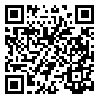Volume 7, Issue 3 (7-2018)
JCP 2018, 7(3): 327-335 |
Back to browse issues page
Download citation:
BibTeX | RIS | EndNote | Medlars | ProCite | Reference Manager | RefWorks
Send citation to:



BibTeX | RIS | EndNote | Medlars | ProCite | Reference Manager | RefWorks
Send citation to:
Olakunle Oladele O, Titilayo Aborisade A. Activity and characterization of antifungal compounds from the peel of sweet orange Citrus sinenesis fruits. JCP 2018; 7 (3) :327-335
URL: http://jcp.modares.ac.ir/article-3-16419-en.html
URL: http://jcp.modares.ac.ir/article-3-16419-en.html
1- Storage Microbiology Laboratory, Department of Biology, School of Sciences, Federal University of Technology, PMB 704, Akure, Nigeria.
Abstract: (3512 Views)
Environmental risks associated with the use of synthetic fungicides have resulted in an emergent trend in plant disease control with focus on the use of botanicals. In this work, the peels of ripe sweet orange fruits were removed, air dried, powdered and extracted with 95% ethanol. The agar diffusion method was used to test the crude extract against the mould, Lasiodiplodia sp. IMI 50324 Which was originally isolated from rotten orange fruits. The extract inhibited mycelial growth of the fungus. The ethanolic extract was subsequently purified by column chromatography and the fractions separately tested for antifungal action. Total phenol contents of fractions and crude extract were both determined. Active fractions were pooled together and analyzed by gas chromatography-mass spectrometry (GC-MS) for structural elucidation. GC-MS revealed that the peel extract contained the flavonoid 5, 6, 7, 8, 3', 4'-hexamethoxyflavone which is commonly called nobiletin. The presence of 5, 6, 7, 8, 3', 4' hexamethoxyflavone in the peel together with the high total phenol content probably account for inhibition of the test fungus.
Article Type: Full Paper |
Subject:
Acarology (Biological Control)
Received: 2018/01/18 | Published: 2018/07/15
Received: 2018/01/18 | Published: 2018/07/15
| Rights and permissions | |
 |
This work is licensed under a Creative Commons Attribution-NonCommercial 4.0 International License. |








